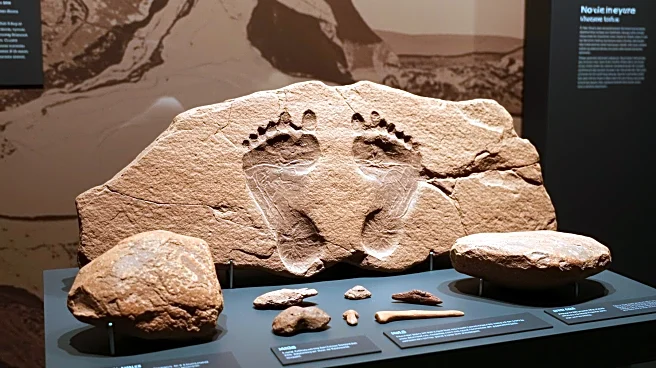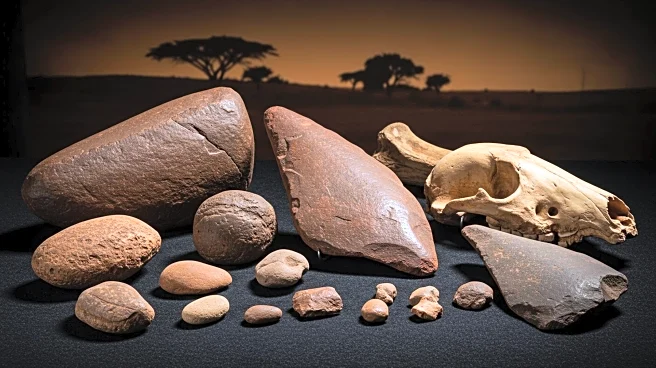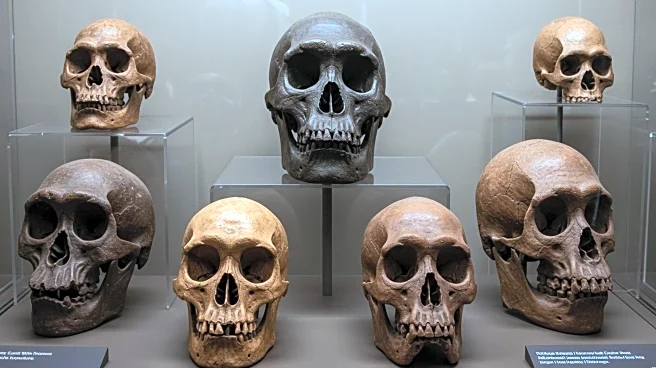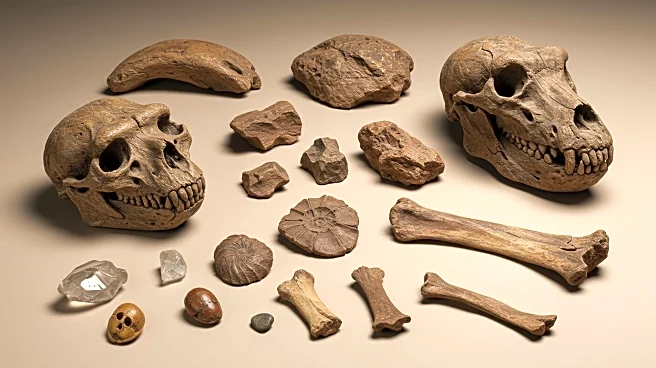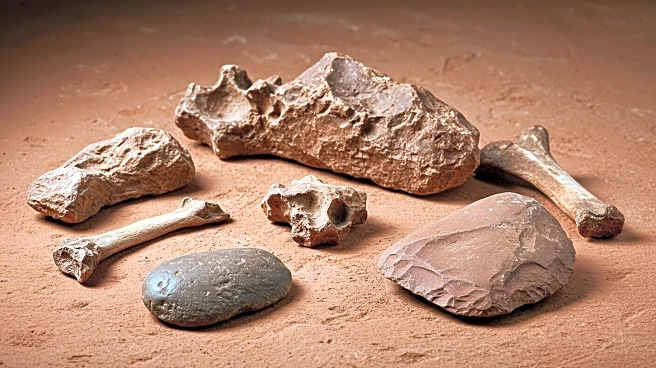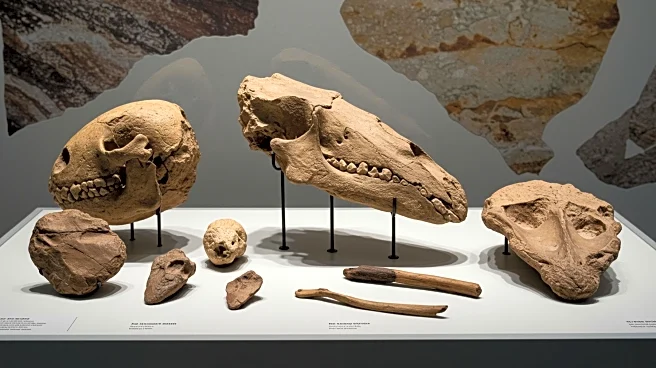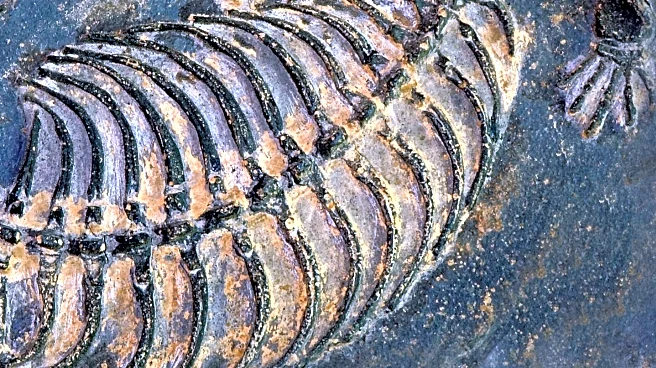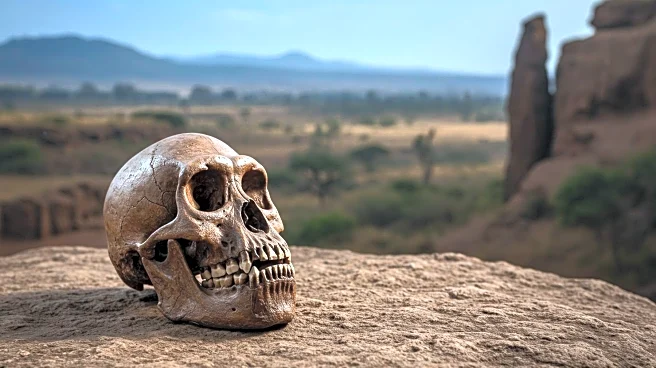Rapid Read • 8 min read
A recent archaeological discovery in Ethiopia's Afar region has unveiled fossilized teeth from two different hominin species, Australopithecus and Homo, dating back 2.6 to 2.8 million years. This finding challenges previous assumptions that Homo species appeared after Australopithecus, suggesting instead that they coexisted. The research, led by Brian Villmoare from the University of Nevada, Las Vegas, emphasizes the complexity of human evolution, indicating that it is not a linear progression but rather a 'bushy tree' with multiple species existing simultaneously. The teeth, found between 2015 and 2020, include ten from Australopithecus and three from Homo, with the Australopithecus teeth potentially belonging to a previously unknown species.
AD
This discovery is significant as it reshapes the understanding of human evolutionary history, highlighting the non-linear nature of evolution. The coexistence of Australopithecus and Homo species suggests a more complex evolutionary process with multiple hominin species adapting and surviving in different ways. This finding could impact the study of human ancestry by providing new insights into how different species interacted and evolved. It also underscores the importance of the Afar region as a critical site for understanding human evolution, offering a glimpse into the environmental and ecological conditions that shaped early human ancestors.
Further research and excavation in the Afar region are anticipated to uncover more fossils, which could provide additional insights into the relationship between Australopithecus and Homo species. Scientists aim to identify more anatomical features to better understand the taxonomy and evolutionary pathways of these hominins. The ongoing study of isotopes and microscopic scratches on the teeth may reveal dietary habits, shedding light on how these species coexisted and competed for resources. The research team hopes to determine which hominin species created the stone tools found at the site, further elucidating the cultural and technological advancements of early human ancestors.
The discovery raises questions about the adaptability and survival strategies of ancient hominins in a changing environment. The Afar region's unique geological activity, with tectonic plates pulling apart, provides a rare opportunity to study ancient sediment layers and fossils. This research could lead to a reevaluation of the evolutionary timeline and the factors that influenced the development of modern humans. The findings also highlight the potential for undiscovered species that may have played a role in human evolution, prompting a reexamination of existing fossil records and evolutionary theories.
AD
More Stories You Might Enjoy
